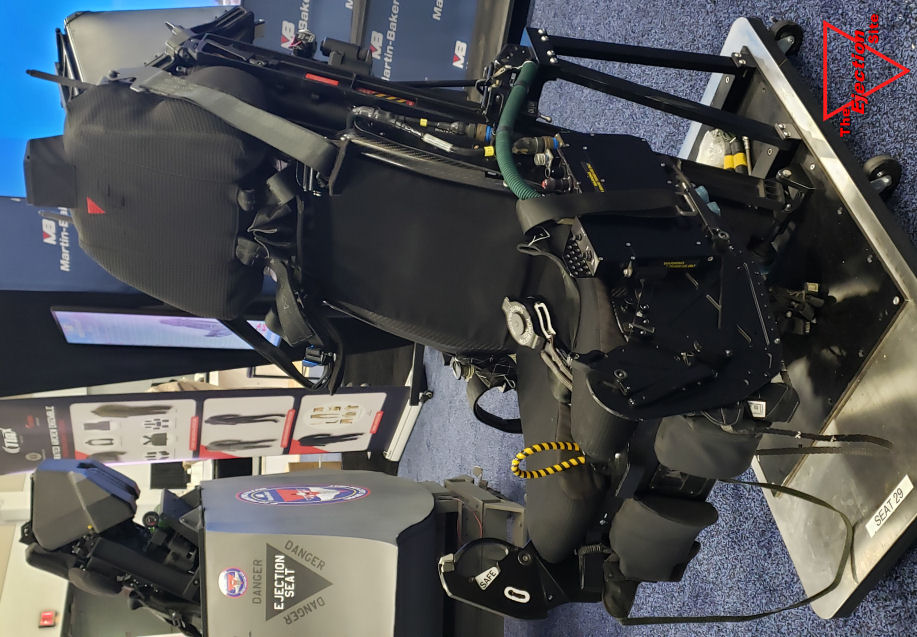 Martin-Baker Mk US16E Seat
Martin-Baker Mk US16E Seat
Mk US16E Seat
 Martin-Baker Mk US16E Seat
Martin-Baker Mk US16E Seat
Mk US16E Seat
 The Martin-Baker Mk. 16-series of seats has been in use for several years now and is the only seat available for the F-35 JSF.
It is an outgrowth of seat design changes that began with the Mk. 15 lightweight seat and is now the basis of seat development for the Mk. US18E seat as well (used in the Block 70 F-16 aircraft).
The Martin-Baker Mk. 16-series of seats has been in use for several years now and is the only seat available for the F-35 JSF.
It is an outgrowth of seat design changes that began with the Mk. 15 lightweight seat and is now the basis of seat development for the Mk. US18E seat as well (used in the Block 70 F-16 aircraft).
I'd like to thank the Martin-Baker team that gave me access to the seats, allowed me to take photographs and freely answered questions on the design and operation to the best of their abilities.
| The Ejection Site Home | |
|---|---|
| Send email to Kevin |